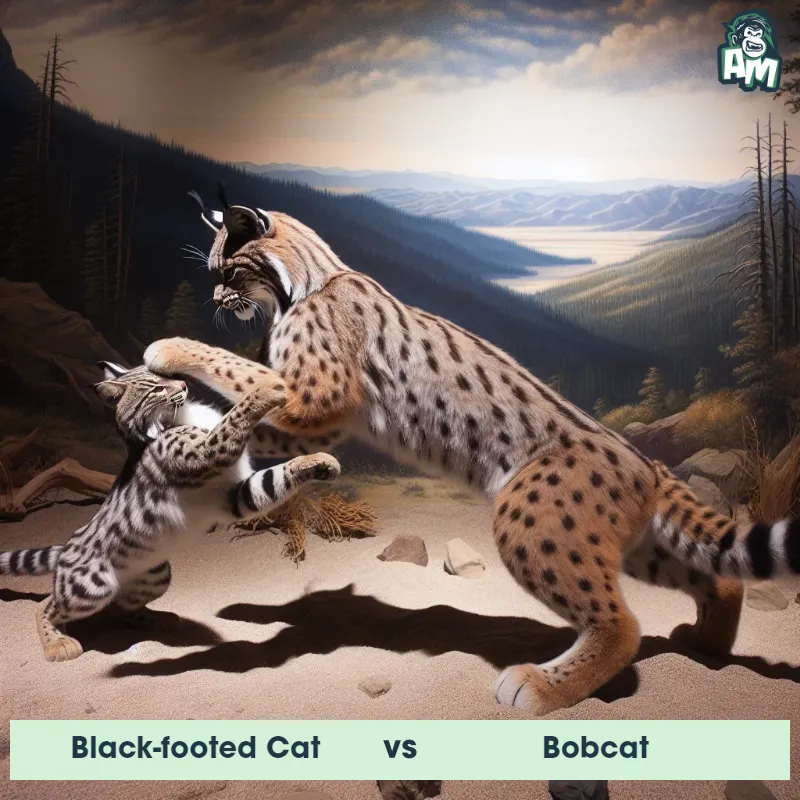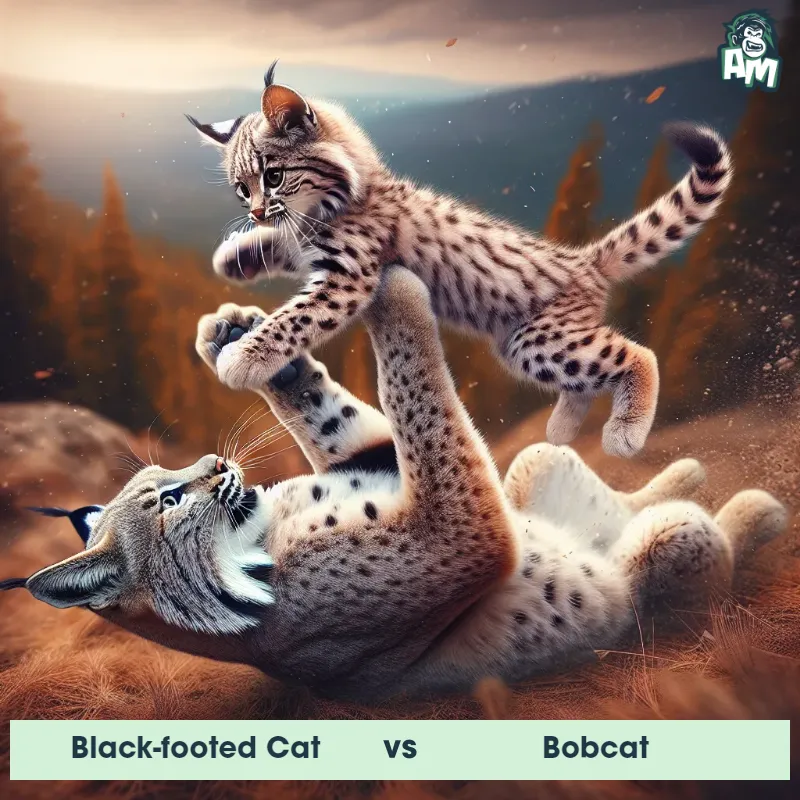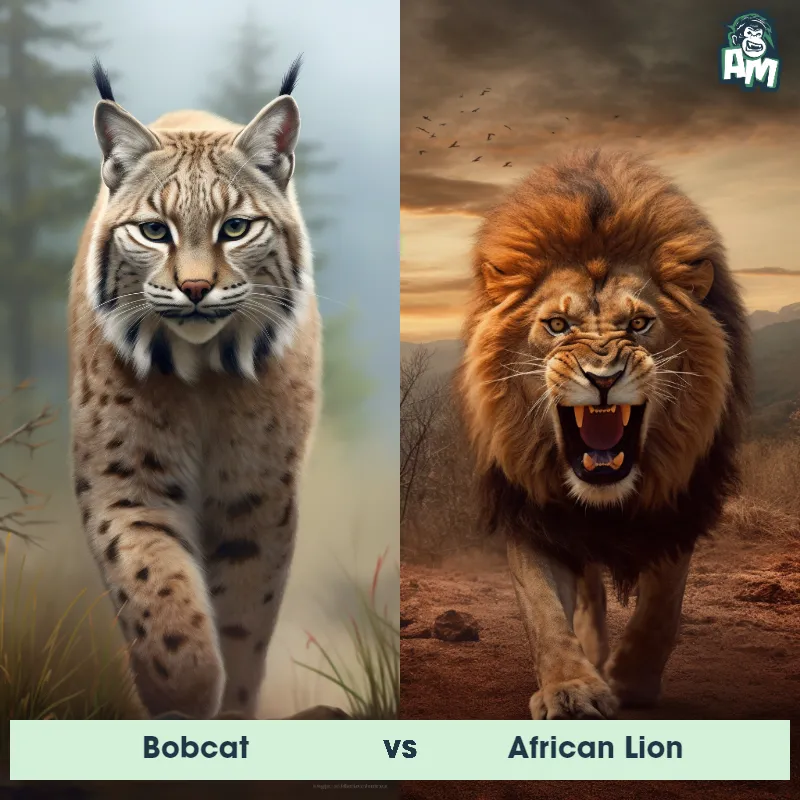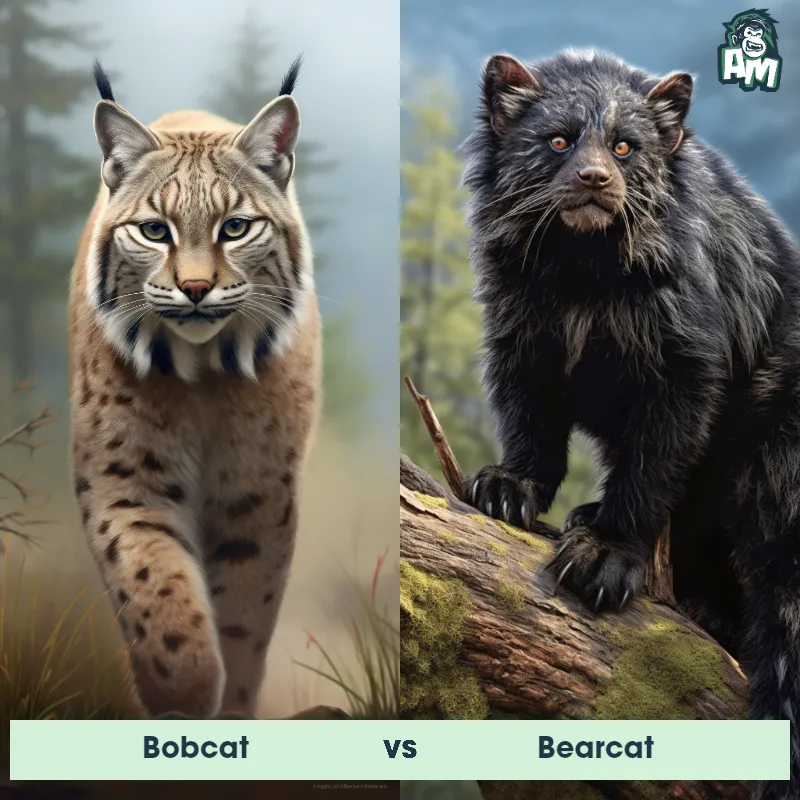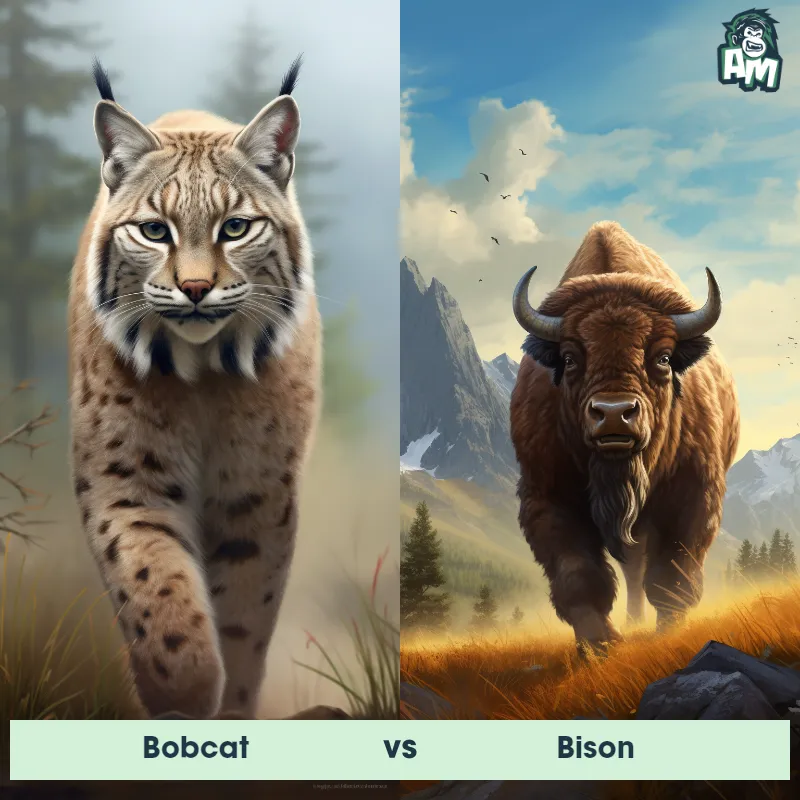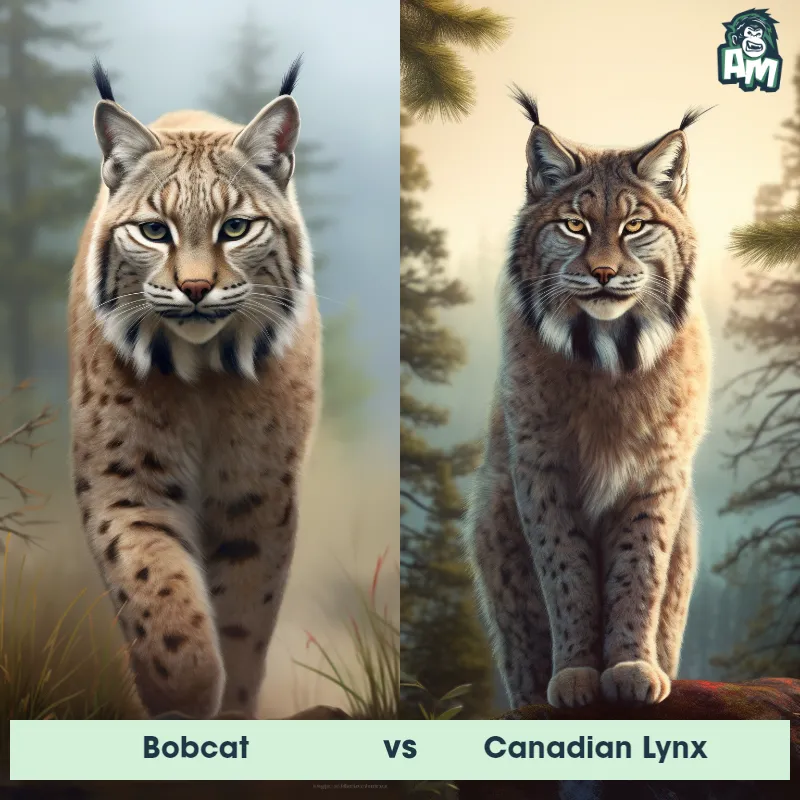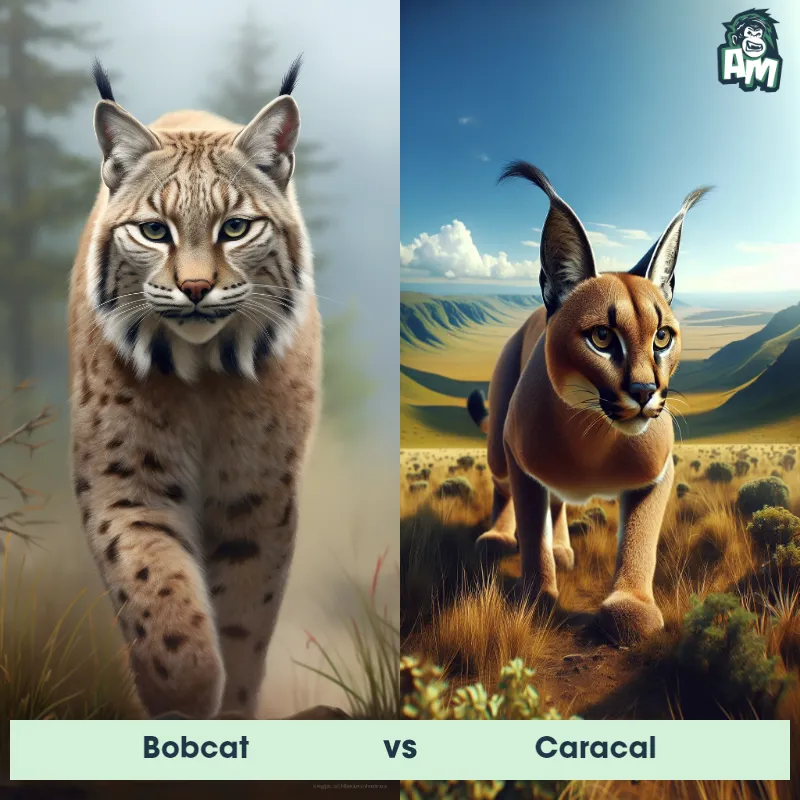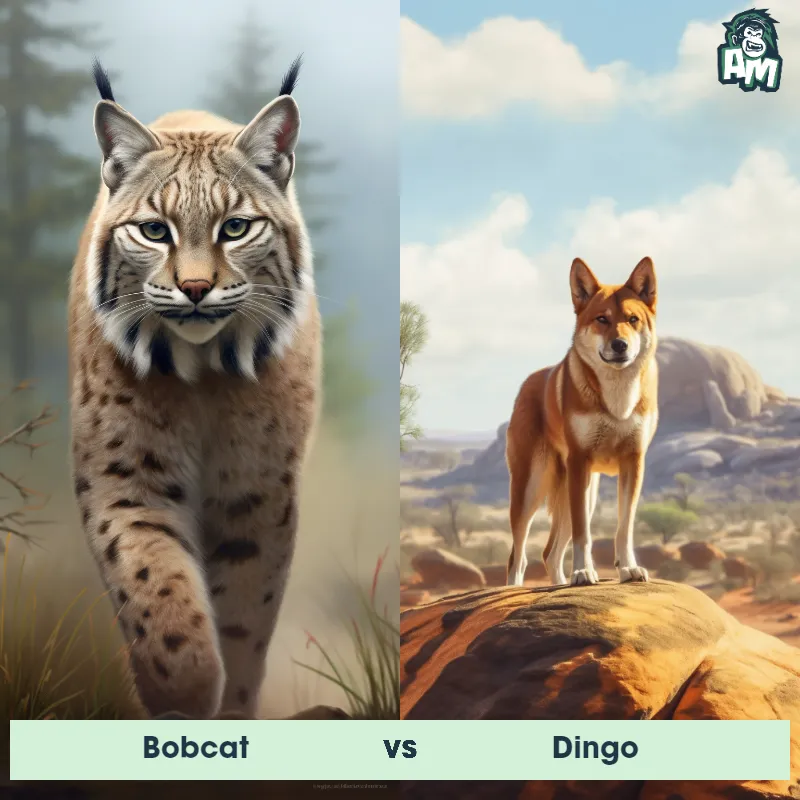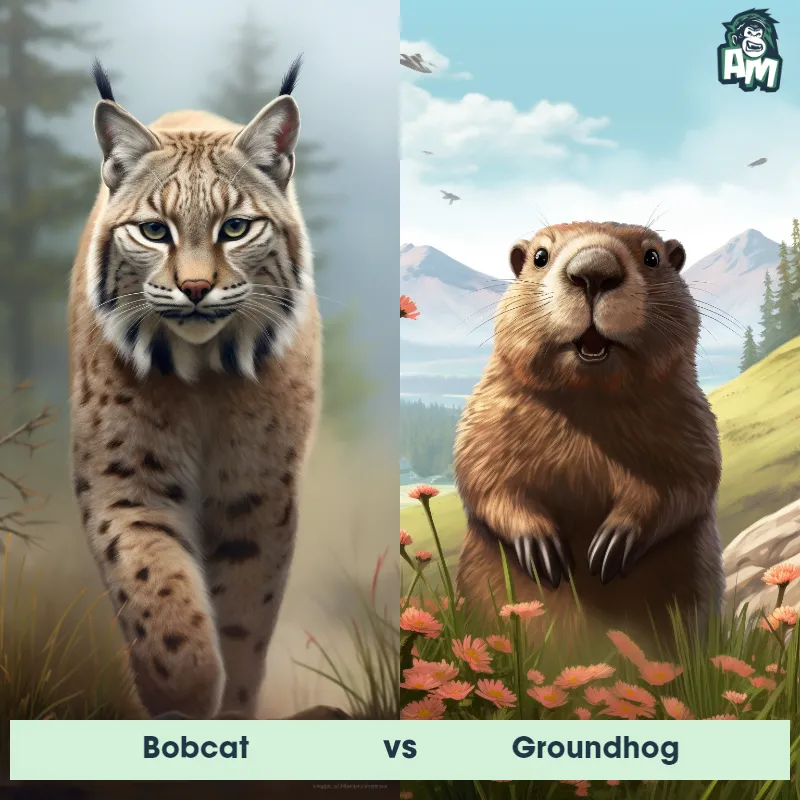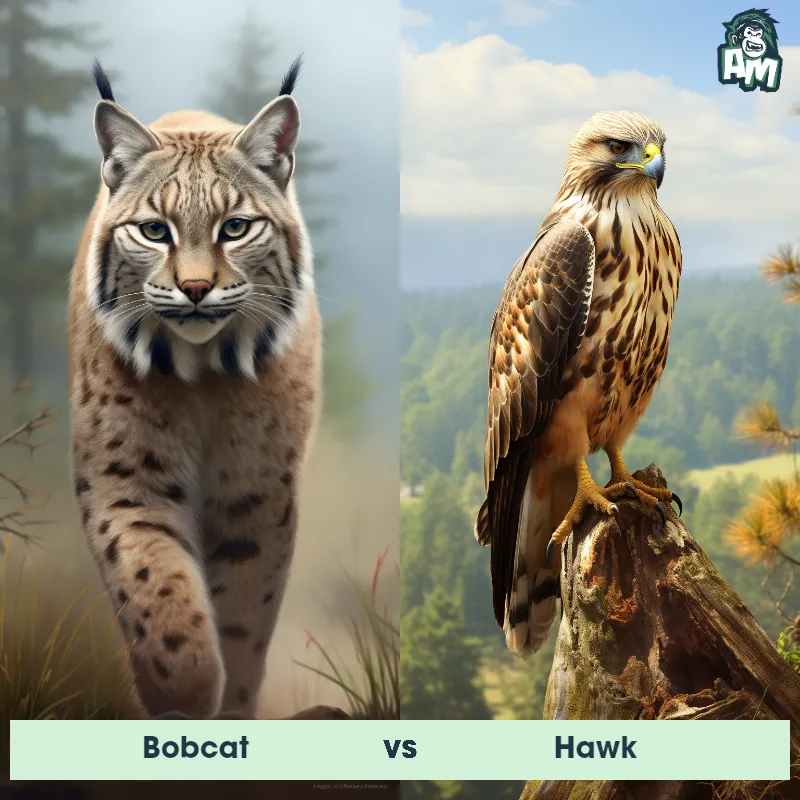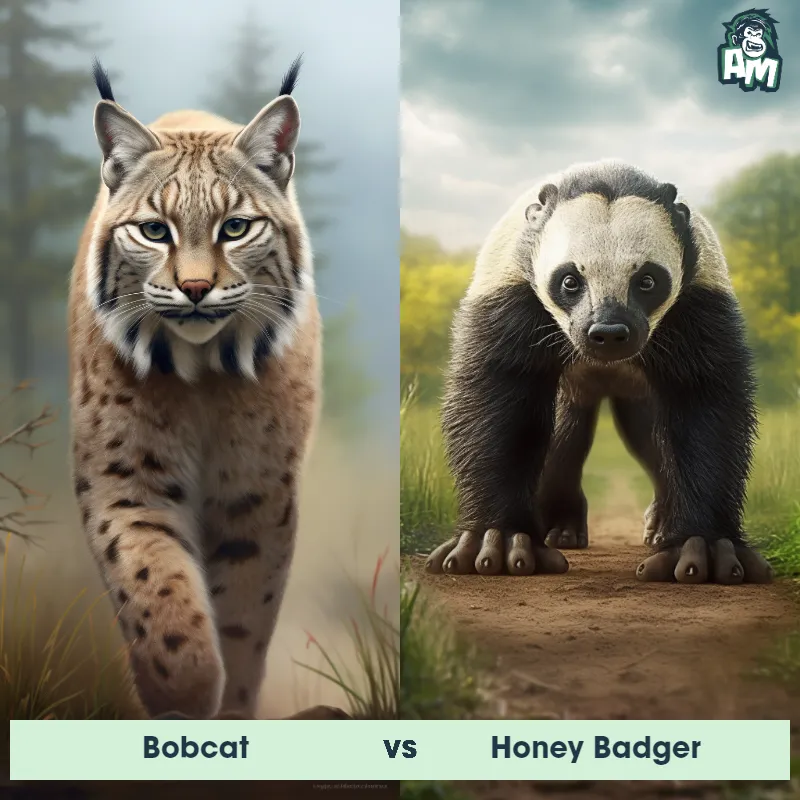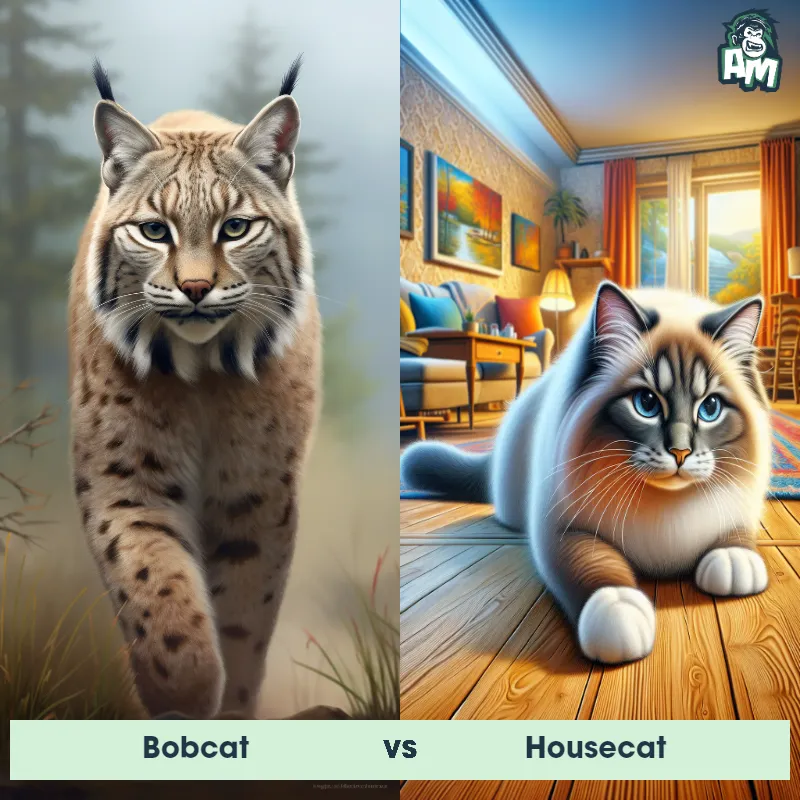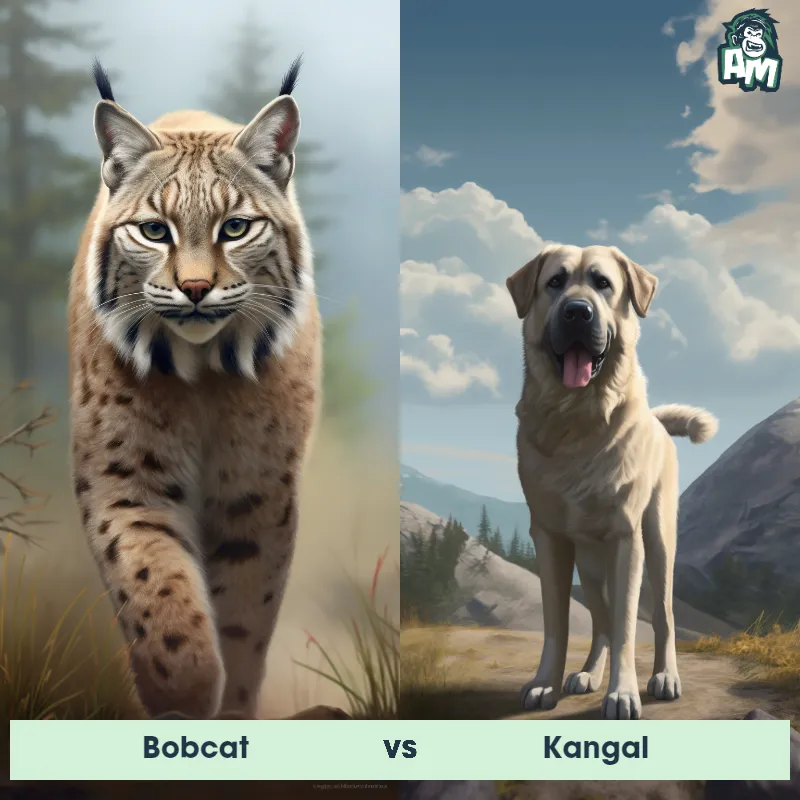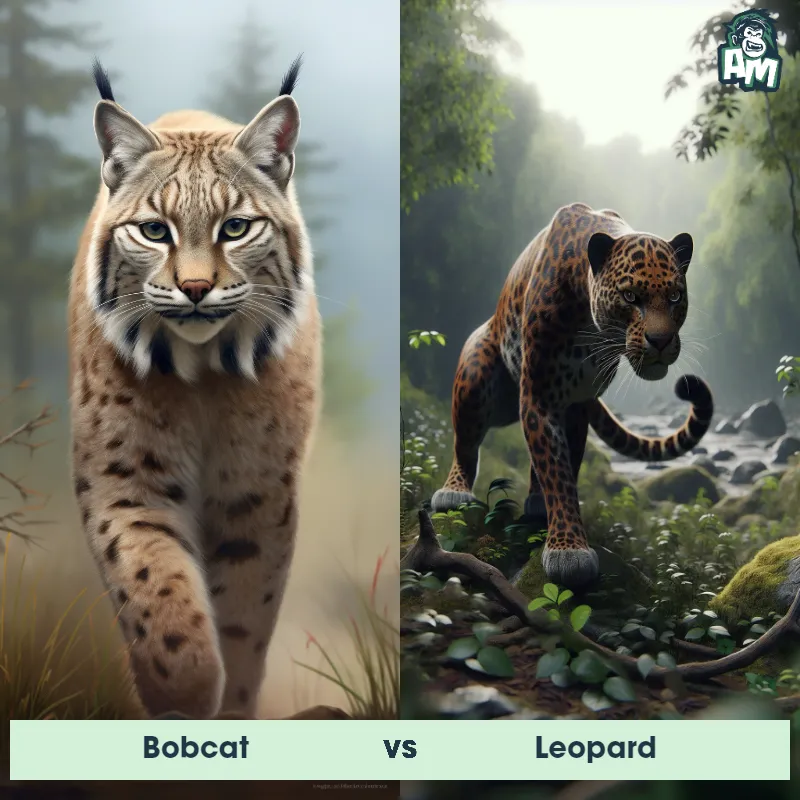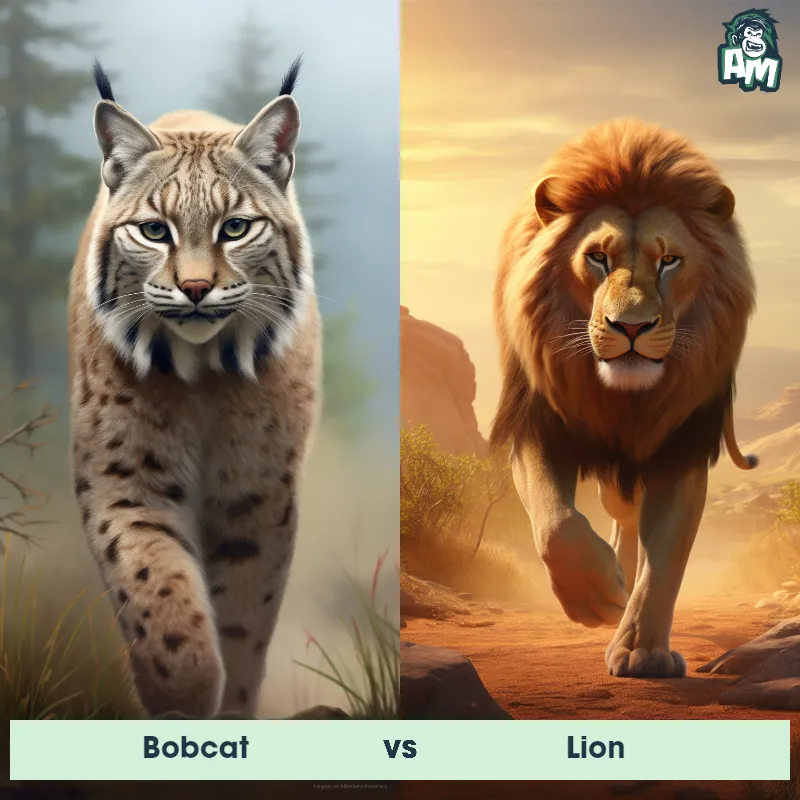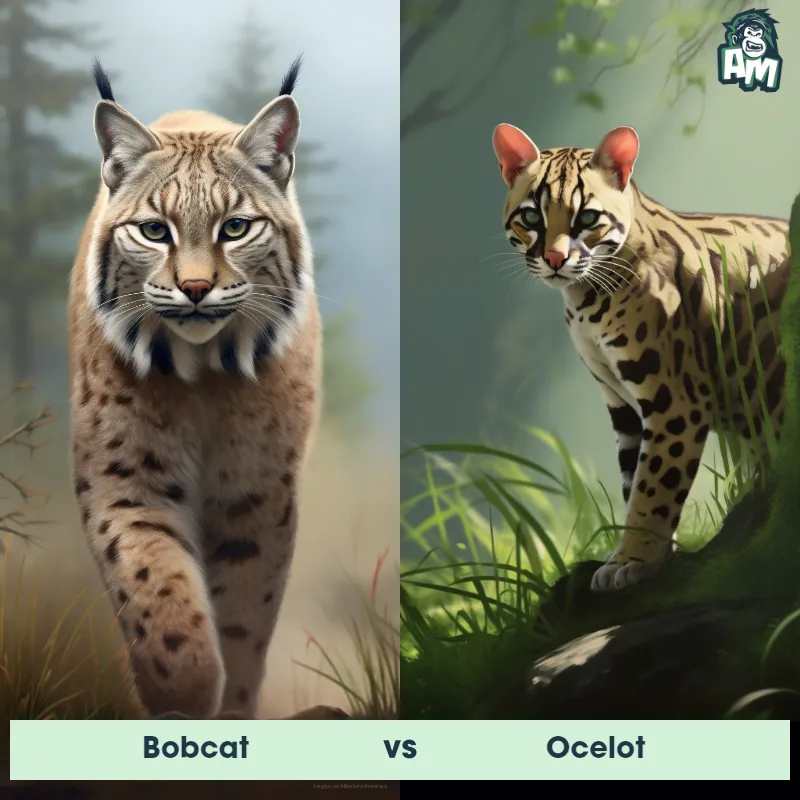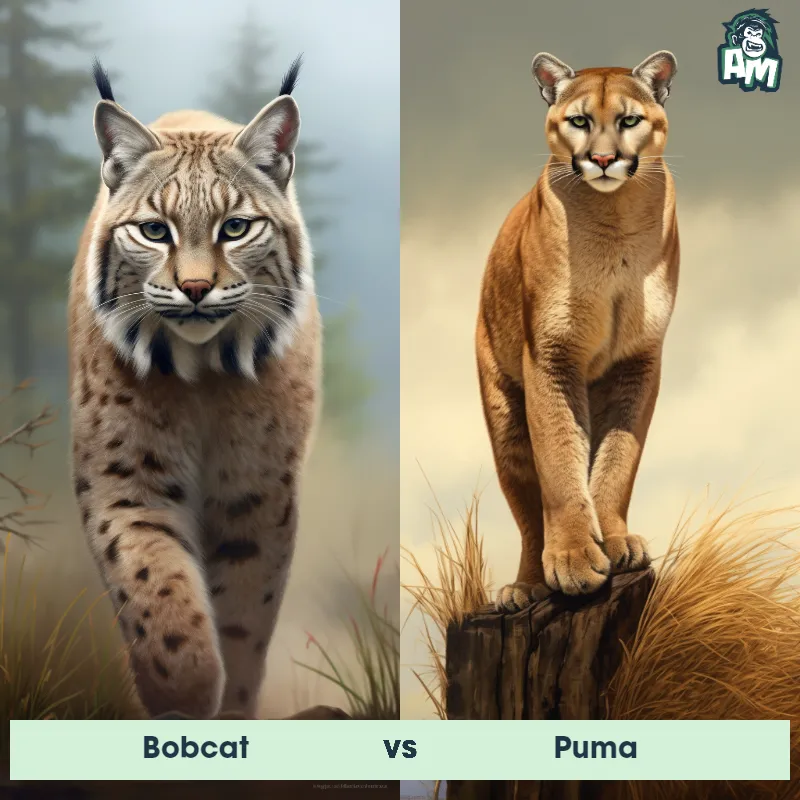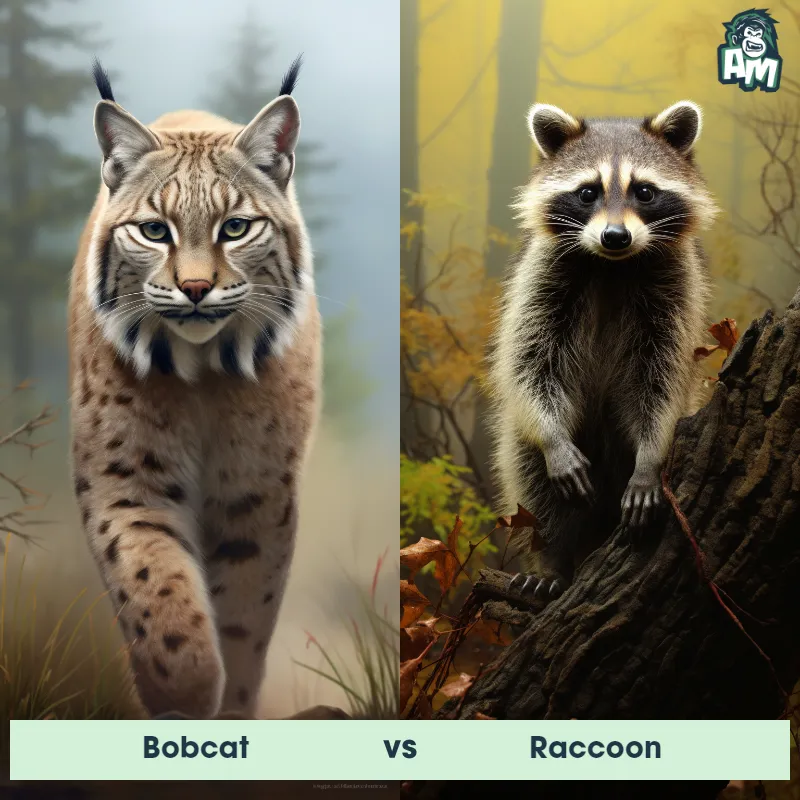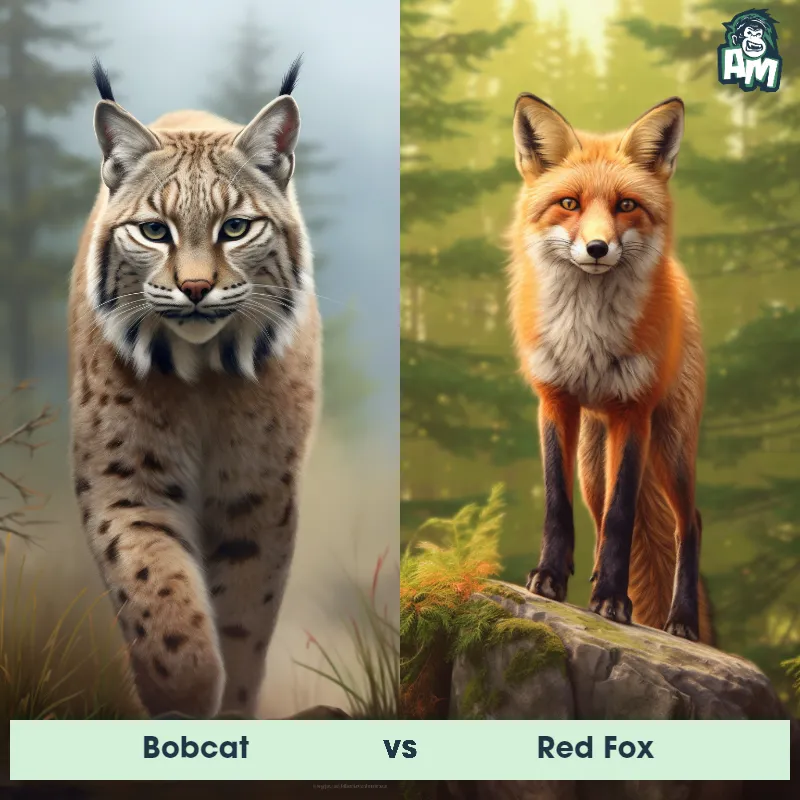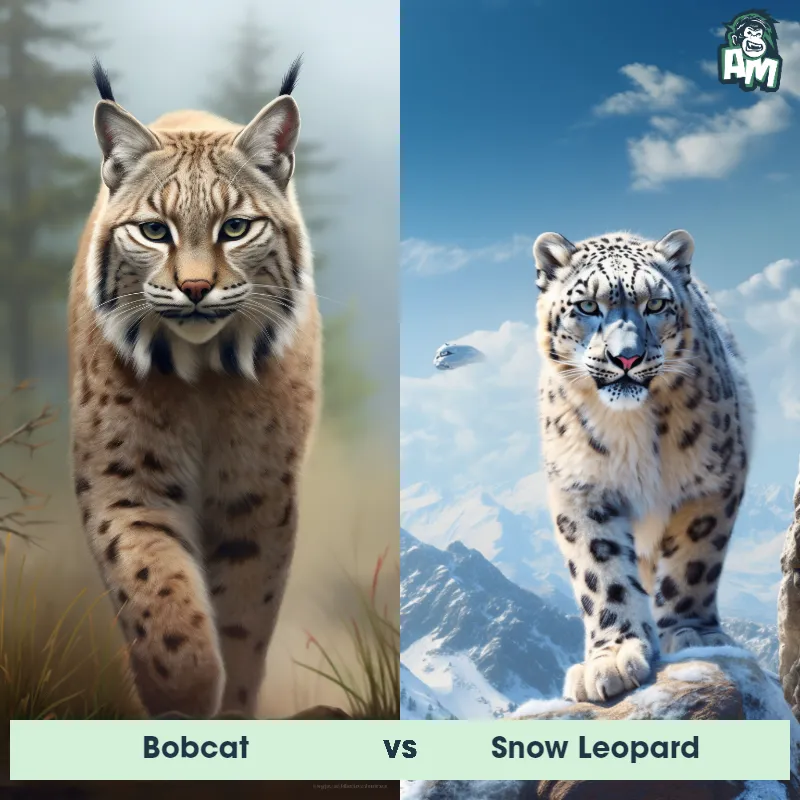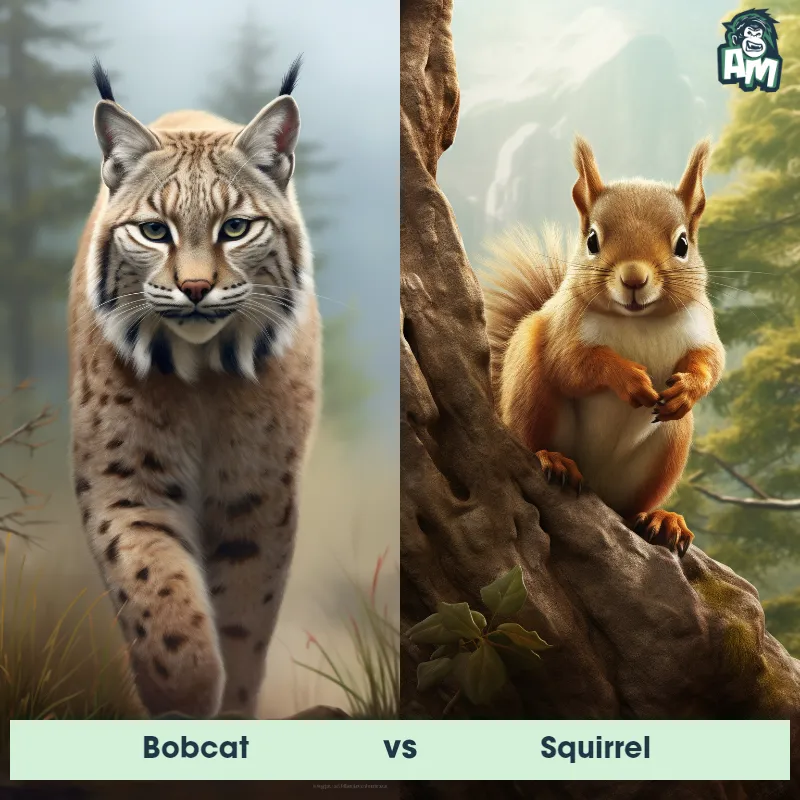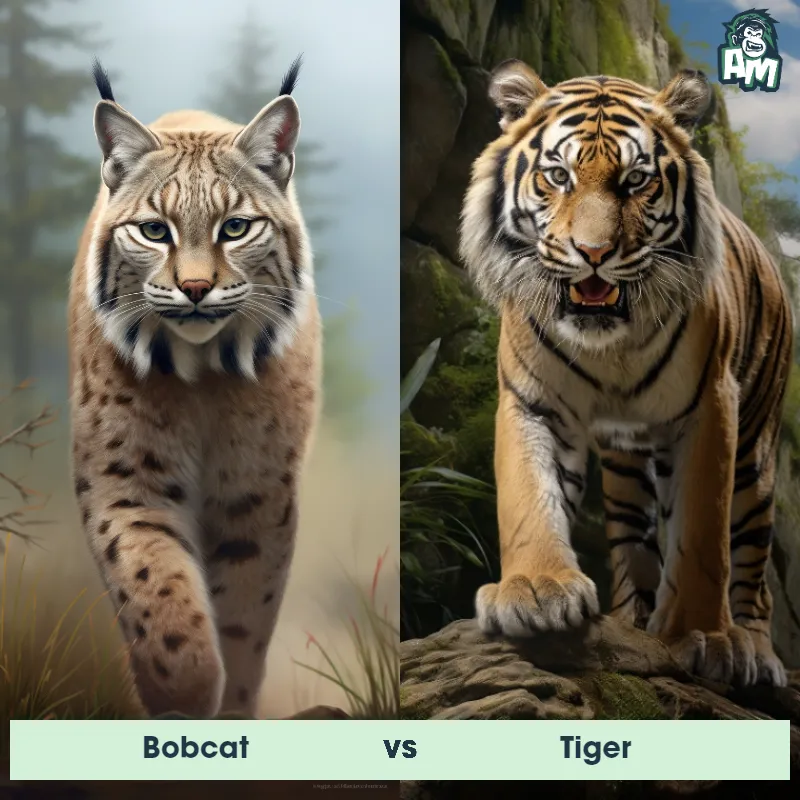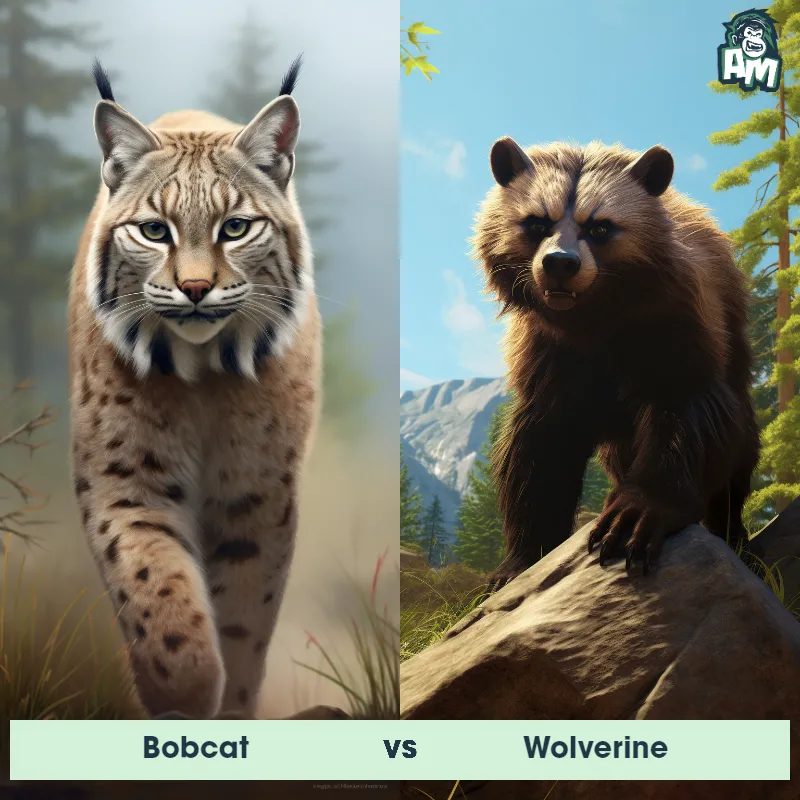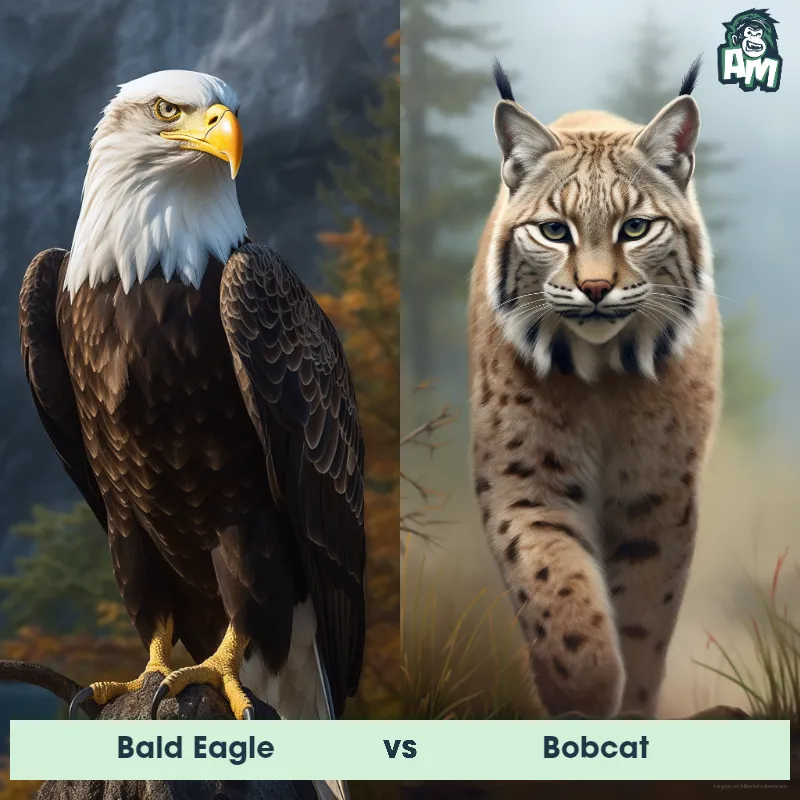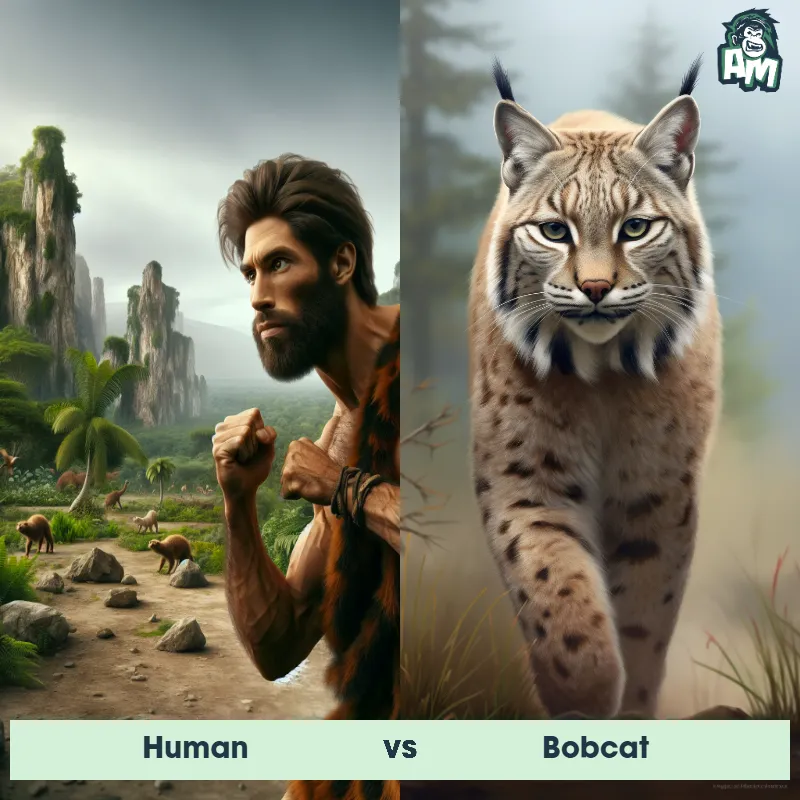The Bobcat
The bobcat, also known as Lynx rufus, is a medium-sized North American wildcat that has a distinct bobbed tail, which is how it got its name. On average, bobcats measure around 24 inches tall at the shoulder and have a body length of about 32 inches. They have soft, dense fur that can vary in color from brownish-gray to reddish-brown, with dark spots and streaks covering their coat. Bobcats are known for their muscular build, tufted ears, and piercing yellow or green eyes. They are solitary and elusive creatures, inhabiting a wide range of habitats, including forests, deserts, and swamps.

| Bobcat | |
|---|---|
| Size | 2-3 feet (0.6-0.9 meters) in length |
| Weight | 15-30 pounds (6.8-13.6 kilograms) |
| Speed | Speed: 30 mph (48 km/hr) |
| Key Strength | Powerful legs and sharp claws |
| Biggest Weakness | Small size compared to other predators |
| Scientific Name | Lynx rufus |
| Family | Felidae |
| Habitat | Forests, deserts, suburban areas |
| Geography | North America |
| Diet | Small mammals, birds, reptiles |
| Lifespan | 10 years - 15 years |

The Bobcat
The bobcat, also known as Lynx rufus, is a medium-sized North American wildcat that has a distinct bobbed tail, which is how it got its name. On average, bobcats measure around 24 inches tall at the shoulder and have a body length of about 32 inches. They have soft, dense fur that can vary in color from brownish-gray to reddish-brown, with dark spots and streaks covering their coat. Bobcats are known for their muscular build, tufted ears, and piercing yellow or green eyes. They are solitary and elusive creatures, inhabiting a wide range of habitats, including forests, deserts, and swamps.
Fun Fact: Bobcats are incredible jumpers and have been known to leap up to 10 feet in the air to catch their prey.
| Bobcat | |
|---|---|
| Size | 2-3 feet (0.6-0.9 meters) in length |
| Weight | 15-30 pounds (6.8-13.6 kilograms) |
| Speed | Speed: 30 mph (48 km/hr) |
| Key Strength | Powerful legs and sharp claws |
| Biggest Weakness | Small size compared to other predators |
| Scientific Name | Lynx rufus |
| Family | Felidae |
| Habitat | Forests, deserts, suburban areas |
| Geography | North America |
| Diet | Small mammals, birds, reptiles |
| Lifespan | 10 years - 15 years |
Match Highlights
Bobcat Matchups
We use AI to simulate matchups between the Bobcat and other animals. Our simulation considers size, strength, and natural predatory behaviors to determine the most likely outcome.
Bobcat: Diet, Predators, Aggression, and Defensive Behaviors
What do Bobcats eat?
Bobcats are carnivorous animals that mainly feed on small mammals like rabbits, mice, squirrels, and birds. They may also hunt larger prey such as deer, but primarily stick to smaller animals.
Do Bobcats have any predators?
Bobcats are considered apex predators in their habitats, meaning they have few natural predators. However, larger predators such as cougars, coyotes, and wolves may occasionally pose a threat to bobcats, especially juveniles or weaker individuals.
Are Bobcats aggressive?
Bobcats are generally solitary and elusive animals, preferring to avoid interactions with humans or other animals whenever possible. They are not known to be naturally aggressive towards humans, but they will defend themselves if threatened or cornered.
Do Bobcats fight?
Bobcats are solitary animals and are not typically territorial unless defending a den site or mating territory. They may engage in fights with other bobcats over food, mates, or territory, but these encounters are usually brief and not as aggressive as in other species.
How do Bobcats defend themselves?
Bobcats are known for their agility, speed, and sharp retractable claws, which they use for hunting and self-defense. When threatened, bobcats may hiss, growl, or yowl to deter potential threats, and they may also use their claws and teeth to defend themselves in a physical confrontation.
What is the biggest weakness of a Bobcat in a fight?
Despite their sharp claws and teeth, bobcats are relatively small and lightweight compared to some of their potential predators. In a fight, their size and strength may be a disadvantage against larger predators like cougars or even larger prey animals like deer. Additionally, bobcats rely on their speed and agility to escape threats rather than engage in prolonged physical fights.
Fun Fact: One unique characteristic of bobcats is their adaptability to various environments, as they can thrive in diverse habitats such as mountains, plains, and even suburban areas.
Fun Fact: Bobcats are highly skilled hunters and have a remarkable success rate of catching their prey, estimated to be around 70-85%, making them efficient predators in their ecosystem.



